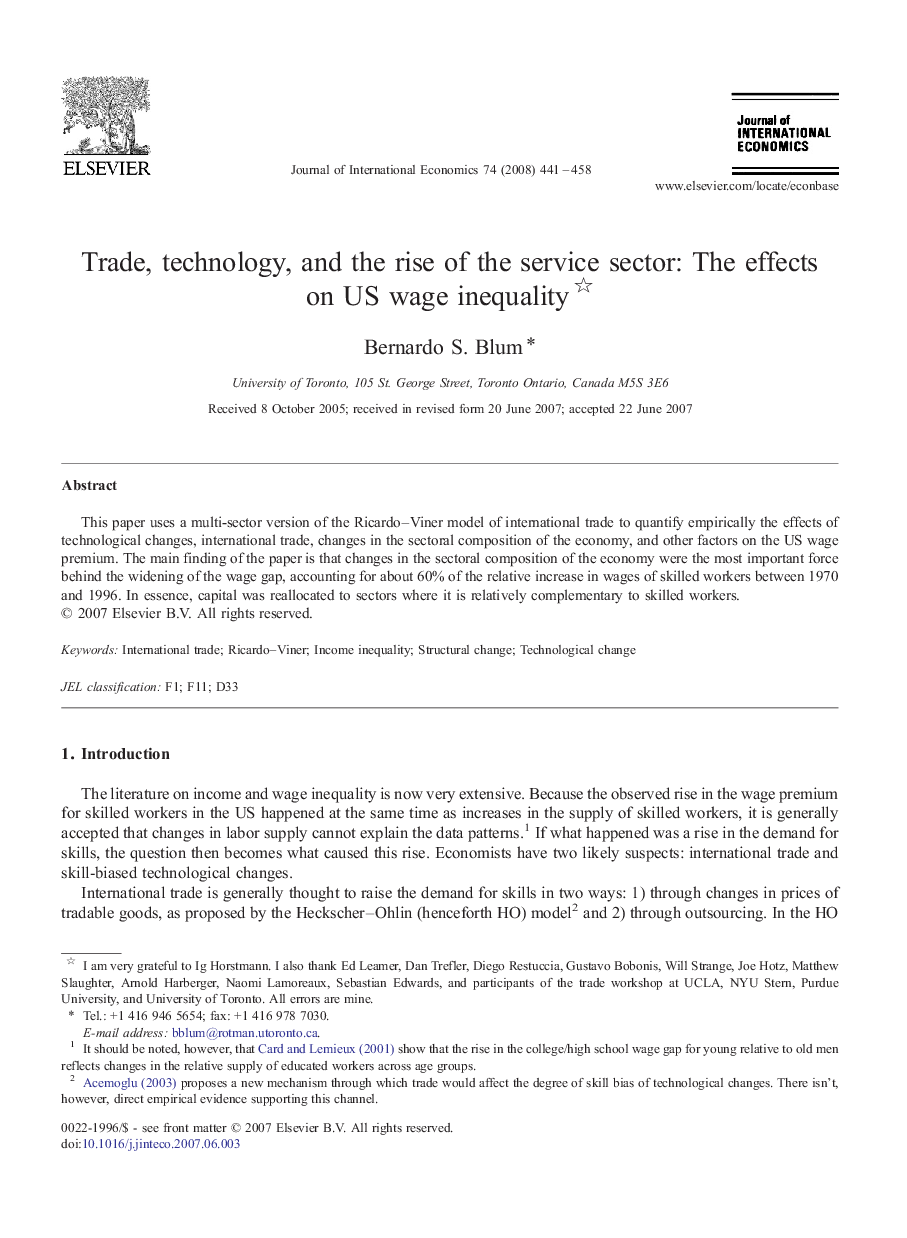| Article ID | Journal | Published Year | Pages | File Type |
|---|---|---|---|---|
| 962794 | Journal of International Economics | 2008 | 18 Pages |
Abstract
This paper uses a multi-sector version of the Ricardo-Viner model of international trade to quantify empirically the effects of technological changes, international trade, changes in the sectoral composition of the economy, and other factors on the US wage premium. The main finding of the paper is that changes in the sectoral composition of the economy were the most important force behind the widening of the wage gap, accounting for about 60% of the relative increase in wages of skilled workers between 1970 and 1996. In essence, capital was reallocated to sectors where it is relatively complementary to skilled workers.
Related Topics
Social Sciences and Humanities
Economics, Econometrics and Finance
Economics and Econometrics
Authors
Bernardo S. Blum,
